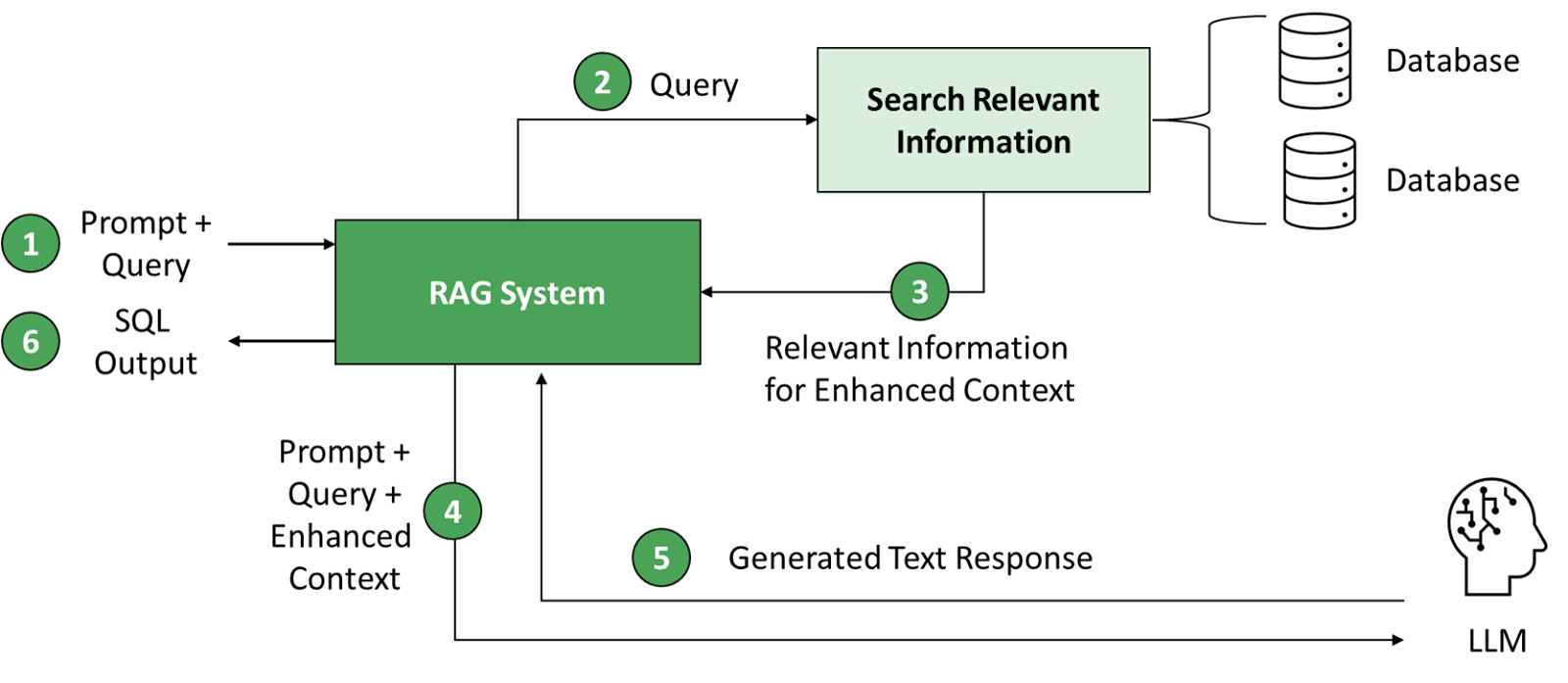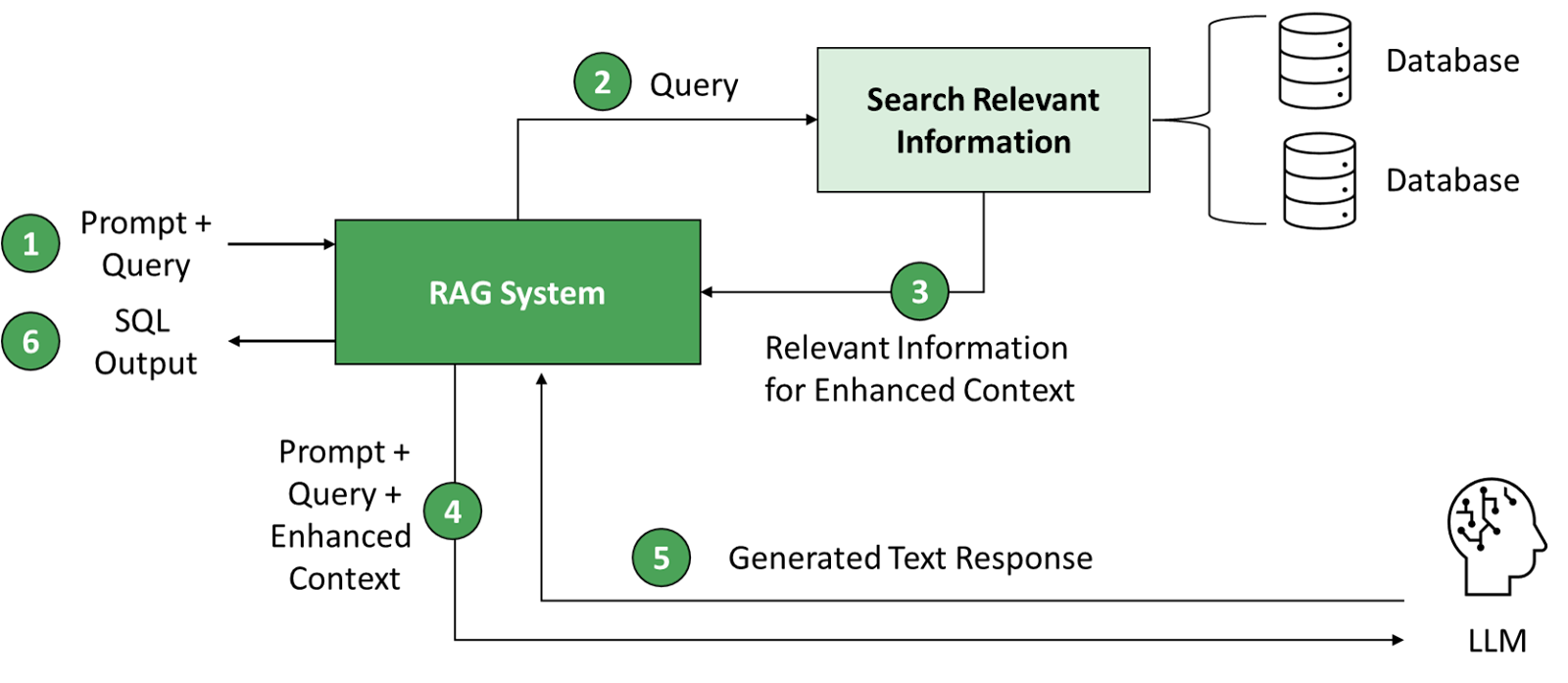In today’s data-driven world, leveraging insights from analytics of internal / external data sources is crucial to achieving business outcomes. To the data-savvy, this means generating SQL queries. However, writing SQL code can be a daunting, complex and time-consuming task, often requiring significant technical expertise. Enter Text-to-SQL technology, a transformative approach that leverages Natural Language Processing (NLP) and Generative AI (Gen AI) to convert natural language queries into SQL code, making data access more accessible to non-technical users. In this blog post, we’ll explore how Text-to-SQL works and how Gen AI enhances its capabilities, its benefits and challenges, and how a data fabric can enhance the power of this technology.
Want to learn more about how to implement text-to-SQL using an underlying data fabric. Click here to download the solutions brief (no form fill required).
Understanding Text-to-SQL
Text-to-SQL technology bridges the gap between natural language and SQL code, allowing users to generate SQL queries by simply asking questions in their everyday language. The process can be broken down into three primary components:
While this process sounds relatively straightforward in theory, its implementation in practice is way more challenging. Broadly speaking there are two different levels of complexity in Text-to-SQL applications:
It is important to understand the difference between those two. While most text-to-SQL tools deliver accurate and performant results on curated datasets, the business reality of most organizations is that not all data is stored in the same locations, much less only in pre-curated datasets. There are many memes on this and it is an inside joke among data professionals. Here’s one of my favorites that all of us have encountered if you’re on the receiving end of a request from the business.

This fact makes adoption of Text-to-SQL so much harder in practice because that discovery and rationale to select the raw data to assemble into this “idea, clean and pristine” table is a very time-intensive and complex task.
Retrieval Augmented Generation (RAG)
Retrieval Augmented Generation (RAG) is crucial in enabling effective Text-to-SQL functionality. RAG works by integrating a retrieval mechanism with the generation process to enhance the accuracy and relevance of the generated SQL queries. Here’s how that works in the context of Text-to-SQL:

RAG enhances the Text-to-SQL process by ensuring that the generated queries are not only syntactically correct but also contextually relevant and accurate. Vector databases play a critical role in this to enable efficient similarity searches. This framework is key to making Text-to-SQL a practical and reliable tool for data access and analysis. More sophisticated frameworks will add additional layers to challenge, test, and verify the SQL outputs, but essentially follow the same logic.
The Pros and Cons of Automated SQL Generation
Intuitively, automated SQL generation offers a number of key advantages to business and users:
However, while the benefits are clear, there are also some challenges that need to be addressed in order for Text-to-SQL to work at scale:
Data Fabric: Enhancing Text-to-SQL
A data fabric is a solution that provides a unified and consistent view of all the relevant data in an enterprise coupled with integrated capabilities enabling seamless data integration, management, and access. By creating a unified abstracted data layer, a data fabric simplifies and enhances data operations, making it easier to work with data from multiple sources in a cohesive manner.
Promethium Text to SQL Demonstration
Like we established earlier, most organizations do not have all of their data in a single warehouse. And even if that is the case, a data warehouse is missing the necessary semantics to deliver accurate results. That is where a data fabric architecture has significant benefits in achieving Text-to-SQL:

Because the data fabric offers seamless access to diverse data sources through a unified layer, it enriches data with contextual information and metadata for better insights, and it facilitates the generation of accurate and actionable insights through integrated data and advanced analytics, an underlying data fabric architecture has key advantages:
Without a data fabric, there is a real risk of “LLM silos,” where each data source has its own LLM, leading to isolated knowledge and non-real-time data access. We are already seeing this today. Every data platform, visualization tool, and data catalog has their own integrated LLM. This creates two challenges: having to use different and multiple prompts and making sure that the retrieval of data from multiple prompts is actually the same and consistent across the tool (more on this topic in an upcoming blog post). We already have multiple sources of data. Do we really need to use multiple LLMs? Doesn’t that defeat the purpose of simplicity? At Promethium, we believe that a unified approach ensures performance and relevance, addressing both data privacy challenges and the inefficiencies of traditional solutions. Have one LLM (of your choice) but have that LLM work across not all your data but all your tools to provide the integrated context.
Putting Text-to-SQL to Work
In practice, the synergistic relationship between data fabric and Text-to-SQL boils down to the following components:

Let us take a look under the hood of how Promethium makes Text-to-SQL a reality. It is a process that leverages all the steps we have talked about in this post to generate an accurate and relevant SQL statement:
Use Case: Creating Patient Insights at a F500 Blood Testing Company
Promethium’s Text-to-SQL technology has been successfully implemented at a Fortune 500 blood testing company, revolutionizing their data management and accessibility. By integrating Promethium’s data fabric, the company gained comprehensive visibility across all their data sources. This seamless connection to diverse datasets enabled the company to build and query datasets on demand, whether they were raw or pre-curated.
The data fabric’s integration allowed anyone with access to easily query and consume data through an intuitive chat interface. This capability significantly improved the company’s ability to respond quickly to patient, physician, and customer needs. The prompt and efficient access to critical data not only enhanced operational efficiency but also ensured higher quality service and patient care. The result was a faster, more responsive organization capable of making informed decisions in real time.
Conclusion
Text-to-SQL technology has the ability to revolutionize the way we interact with data, making it more accessible and efficient. By combining the power of Gen AI and a data fabric architecture, you can get a powerful solution that simplifies SQL query generation.
Compared to other approaches, the combination is able to truly democratize data access with a solution that delivers accurate and relevant results, regardless of whether you know where your data is located.
If you are curious to learn more about Text-to-SQL and see how Promethium works in practice, watch the full webinar by our founder Kaycee Lai here: Using GenAI to Generate SQL: What You Really Need to Know or download our full solutions brief.
If you want to learn more about how Promethium can help your organization democratize data access and become more data-driven, contact us now to schedule a demo.




